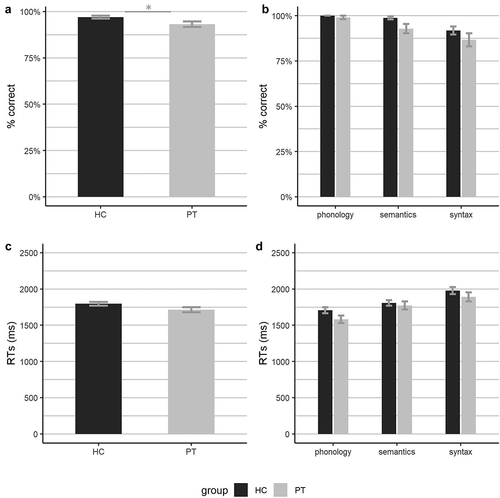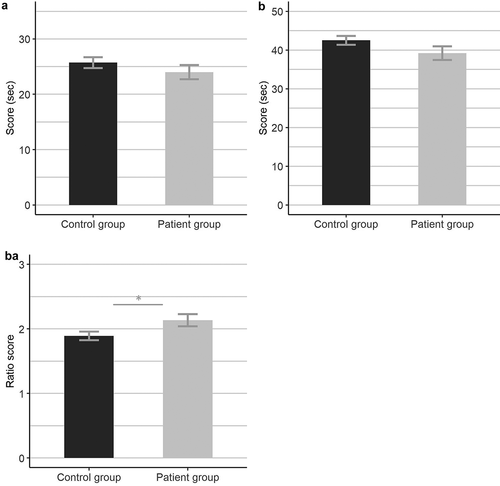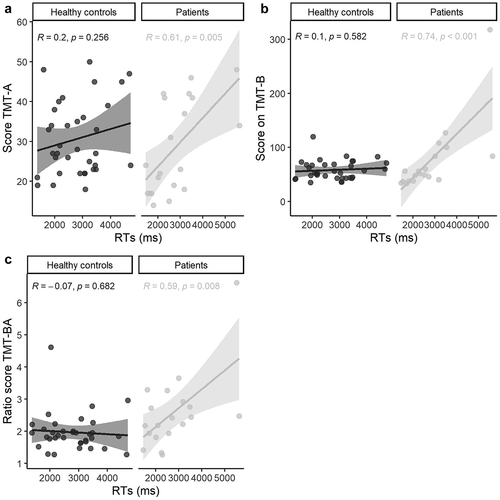Figures & data
Table 1. Demographic and tumour characteristics. Education level based on Verhage (Citation1964): Dutch classification system including 7 categories. 1: did not finish primary school, 2: finished primary school, 3: did not finish secondary school, 4: finished secondary school, low level, 5: finished secondary school, medium level, 6: finished secondary school, highest level, and/or college degree, 7: university degree).
Table 2. Individual patient scores. Table legend: PP; participant number, Age; age in years at time of assessment, Edu; education level based on Verhage (Citation1964), Sex; male (M) or female (F), Hand; handedness left (L) or right (R), Grade; tumour grade from I–IV based on WHO classification, Location; location of the tumour: left (L) or right (R) hemisphere followed by lobe, WFP; word-finding problems, BNT; score on Boston Naming Test, TT; score on shortened Token Test, TMT-A; score (sec) on Trail Making Test-A, TMT-B; score (sec) on Trial Making Test-B, TMT-BA; ratio of difference score TMT part A and B, SJT; reaction times (ms) and accuracy scores on the Sentence Judgment Test. Deviant scores marked in bold.
Figure 1. Reaction times (in milliseconds) and accuracy (percentage correct) on the SJT for healthy control participants (HC) and patients (PT) and per linguistic domain. Error bars represent the standard error.

Figure 2. Scores (in seconds) on the TMT-A and TMT-B and ratio scores on TMT-BA per participant group. Error bars represent the standard error.

Figure 3. Correlations between the reaction times (milliseconds) on the SJT and the TMT-A (A), TMT-B (B), and TMT-BA (C).

Figure 4. Visualisation of linear regression model of the reported severity of word-finding problems predicted by the reaction times (milliseconds) on the SJT.

Table A. BNT Score by group, age, and education level.
Table B. Reaction times on the sentence judgment test.
Table C. Summary accuracy scores Sentence Judgment Test.
Table D. TMT-A Score by group, age, and education level.
Table E. TMT-B Score by group, age, and education level.
Table F. Ratio score TMT-BA score by group, age, and education level.
